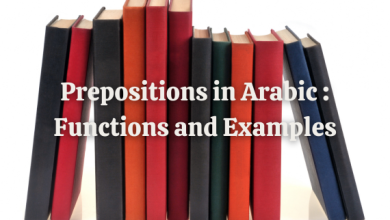The subject and predicate are the two pillars of any sentence in Arabic, much like a pilot and co-pilot steering an aircraft to its destination. Without either, the sentence would be lost in chaos, unable to convey a clear and meaningful message. Understanding these fundamental components is key to mastering Arabic grammar and ensuring effective communication.
Arabic, like all languages, has its unique structure and rules. The way sentences are formed in Arabic is fascinating and intricate, relying heavily on the relationship between the subject and predicate. This article will guide you through the essentials of Arabic syntax, focusing on the subject and predicate, and provide practical insights to enhance your understanding and use of the language.
Introduction to Subject and Predicate in Arabic
The subject and predicate form the core of any Arabic sentence. Think of them as the engine and wheels of a car; without either, the car cannot move forward. In Arabic, a subject (المبتدأ) is the noun or pronoun that the sentence is about, while the predicate (الخبر) provides information about the subject. Together, they create a complete thought.
Understanding how these elements work in Arabic is essential for anyone learning the language. It helps not only in constructing correct sentences but also in comprehending written and spoken Arabic effectively.
What is a Subject in Arabic?
In Arabic grammar, the subject (المبتدأ) is the part of the sentence that indicates what or who the sentence is about. It is usually a noun or pronoun and typically comes at the beginning of a nominal sentence. The subject is the cornerstone upon which the rest of the sentence is built.
For example, in the sentence “الولدُ ذكيٌ” (The boy is smart), “الولدُ” (the boy) is the subject. It tells us who or what we are discussing.
Characteristics of the Subject
- Definiteness: Subjects are often definite nouns or pronouns.
- Case Ending: The subject is marked with a nominative case ending, often indicated by a “dammah” (ـُ).
What is a Predicate in Arabic?
The predicate (الخبر) is what tells us something about the subject. It can be an adjective, a noun, or even a verb phrase that completes the meaning initiated by the subject. The predicate adds depth and information to the sentence.
In the example “الولدُ ذكيٌ” (The boy is smart), “ذكيٌ” (smart) is the predicate. It provides information about the boy.
Types of Predicates
- Simple Predicate: A single word or adjective that describes the subject.
- Compound Predicate: A phrase or clause providing more detailed information.
Types of Sentences in Arabic
Arabic sentences are primarily divided into two types: nominal sentences (الجملة الاسمية) and verbal sentences (الجملة الفعلية). Each type has its own structure and rules.
Nominal Sentences
Nominal sentences begin with a noun and consist of a subject and a predicate. They are often used to describe a state or attribute.
Verbal Sentences
Verbal sentences start with a verb and consist of a verb, subject, and object (if needed). They are used to express actions.
Nominal Sentences and Their Structure
Nominal sentences are a fundamental aspect of Arabic syntax. They consist of two main components:
- Subject (المبتدأ): The noun or pronoun the sentence is about.
- Predicate (الخبر): The information or description about the subject.
Example: “الكتابُ مفيدٌ” (The book is useful).
- Subject: “الكتابُ” (The book)
- Predicate: “مفيدٌ” (Useful)
Common Structures
- Subject + Predicate: Simple descriptive sentences.
- Subject + Adjective: Where the predicate is an adjective.
Verbal Sentences and Their Structure
Verbal sentences are built around a verb and follow a different structure:
- Verb (الفعل): The action being described.
- Subject (الفاعل): The doer of the action.
- Object (المفعول به): The receiver of the action (if necessary).
Example: “كتبَ الطالبُ الدرسَ” (The student wrote the lesson).
- Verb: “كتبَ” (Wrote)
- Subject: “الطالبُ” (The student)
- Object: “الدرسَ” (The lesson)
Verb-Subject Agreement
In Arabic, the verb must agree with the subject in number and gender.
The Role of Syntax in Understanding Sentences
Syntax plays a crucial role in understanding and forming sentences correctly. It helps determine the relationship between words and ensures that sentences convey the intended meaning.
Syntax in Nominal Sentences
In nominal sentences, syntax dictates the position and agreement between the subject and predicate.
Syntax in Verbal Sentences
In verbal sentences, syntax ensures that the verb, subject, and object align correctly to form a coherent sentence.
Common Mistakes in Identifying Subject and Predicate
Even experienced learners can make mistakes in identifying the subject and predicate. Here are some common pitfalls:
- Misidentifying the Subject: Confusing the subject with another noun in the sentence.
- Predicate Errors: Failing to recognize the correct form or placement of the predicate.
- Agreement Issues: Incorrect agreement between subject and predicate in gender or number.
Tips for Avoiding Mistakes
- Pay attention to case endings.
- Practice identifying subjects and predicates in various sentences.
- Review rules of agreement regularly.
Practical Tips for Mastering Arabic Sentences
Mastering Arabic sentences requires practice and understanding of syntax rules. Here are some practical tips:
- Regular Practice: Consistently practice forming sentences to reinforce syntax rules.
- Reading and Listening: Exposure to Arabic texts and conversations improves understanding.
- Writing Exercises: Practice writing sentences to solidify your grasp of subject and predicate roles.
Using Technology
- Utilize language learning apps and resources.
- Engage with native speakers through online platforms.
Examples of Subject and Predicate in Arabic Sentences
To illustrate the concepts discussed, let’s explore some examples:
- Nominal Sentence: “السيارةُ جديدةٌ” (The car is new).
- Subject: “السيارةُ” (The car)
- Predicate: “جديدةٌ” (New)
- Verbal Sentence: “يقرأُ الطالبُ الكتابَ” (The student reads the book).
- Verb: “يقرأُ” (Reads)
- Subject: “الطالبُ” (The student)
- Object: “الكتابَ” (The book)
Analyzing Sentence Structure
- Identify the subject, predicate, and object in each sentence.
- Note the agreement between elements in gender and number.
The Importance of Context in Sentence Structure
Understanding context is essential for interpreting and forming Arabic sentences correctly. Context helps determine the appropriate structure and ensures that sentences convey the intended meaning.
Contextual Clues
- Pay attention to surrounding words and phrases.
- Consider the overall message or theme of the conversation or text.
Conclusion
Understanding the subject and predicate in Arabic sentences is fundamental to mastering the language. These elements form the backbone of sentence structure, enabling effective communication and expression. By grasping the rules and practicing regularly, learners can enhance their Arabic language skills and achieve greater fluency.
Frequently Asked Questions (FAQs)
What is a subject in Arabic grammar?
In Arabic grammar, the subject is the noun or pronoun that the sentence is about, often appearing at the beginning of a nominal sentence.
What is a predicate in Arabic sentences?
The predicate is what provides information about the subject, completing the sentence’s meaning.
How do nominal and verbal sentences differ?
Nominal sentences begin with a noun and consist of a subject and predicate, while verbal sentences begin with a verb and consist of a verb, subject, and object.
What are common mistakes in identifying subject and predicate?
Common mistakes include misidentifying the subject, incorrect predicate placement, and agreement errors between elements.
How can I improve my understanding of Arabic sentence structure?
Practice regularly, read Arabic texts, engage in writing exercises, and seek exposure to native speakers and conversations.
Join our community by subscribing to our channel.




